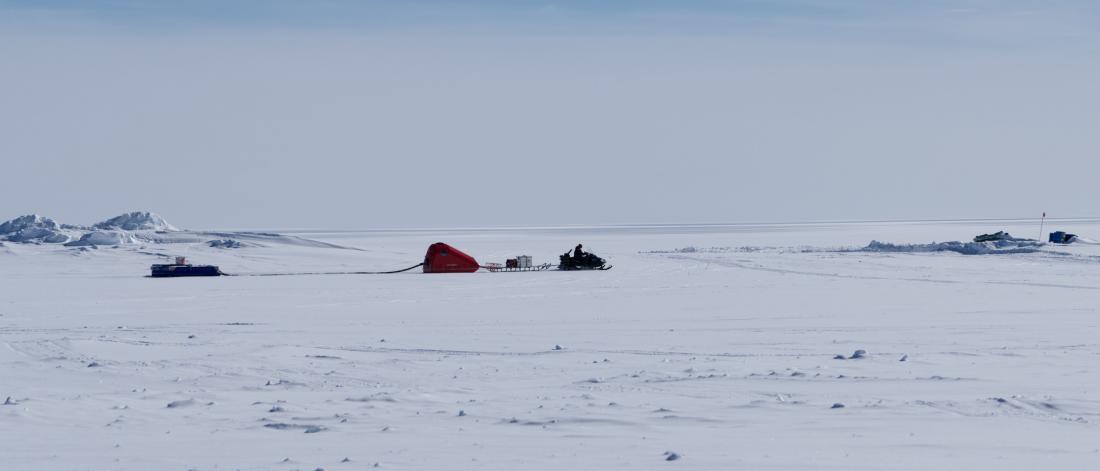Dorthe Dahl-Jensen (PI)
Professor & Canada Excellence Research Chair
Debbie Armstrong
Technician
David Lilien
Research Associate
Gary Stern
Associate Professor
Feiyue Wang
Professor & Canada Research Chair
The University of Manitoba campuses and research spaces are located on original lands of Anishinaabeg, Ininiwak, Anisininewuk, Dakota Oyate, Dene and Inuit, and on the National Homeland of the Red River Métis. More
University of Manitoba
Winnipeg, Manitoba Canada, R3T 2N2

The Arctic Ocean is undergoing dramatic changes as sea ice thins and retreats further north throughout the year. During summer 2018, the ocean even opened north of Greenland, with thousands of square kilometers of open water where thick, perennial sea ice used to be. This sea-ice retreat changes the climate of the land surrounding the Arctic Ocean. Ice caps on these islands are thus retreating as they are exposed to warmer conditions and more melt. By studying cores from these ice caps, it is possible to retrieve proxy records of past Arctic sea-ice and climate conditions.
The Müller Ice Cap core will help answer:
Dorthe Dahl-Jensen (PI)
Professor & Canada Excellence Research Chair
Debbie Armstrong
Technician
David Lilien
Research Associate
Gary Stern
Associate Professor
Feiyue Wang
Professor & Canada Research Chair
University of Copenhagen
Queen's University
University of Alberta
University of British Columbia
University of Ottawa
Alfred Wegener Institute
The Müller ice core will enhance our understanding of how the ocean, atmosphere, sea ice, and glaciers and ice caps interact with each other over thousands of years.
The project will provide unique insight into how sea ice has varied in the Arctic over long periods and will pair this information about how the climate and glaciers in the region have changed during the same period. This information is important context for understanding modern changes to the Arctic; sea ice extent is changing rapidly, and glaciers are rapidly retreating, but how these changes compare to those in the past is not fully known.
The ice recovered in this project will contain a wealth of other information, for example about contaminants and mercury concentrations in the area, and project partners and collaborators will make measurements on the core to determine how these properties have varied through time. A continuous record of the ice from the project will be archived at the Canadian Ice Core Laboratory in Edmonton, which will make further measurements possible when the development of new methods makes it possible to glean new information from the core in the future.
Estimating the ice thickness of the Muller Ice Cap to support selection of a drill site.
Zinck, A.-S.P. & Grinsted, A. (2022). "Brief communication: Estimating the ice thickness of the Müller Ice Cap to support selection of a drill site". The Cryosphere, 16(4), 1399-1407. https://doi.org/10.5194/tc-16-1399-2022
Read about our progress on the project.
This research is undertaken thanks to funding from the Canada Research Chairs Program.
Centre for Earth Observation Science
535 Wallace Building
125 Dysart Rd.
University of Manitoba (Fort Garry campus)
Winnipeg, MB R3T 2N2 Canada